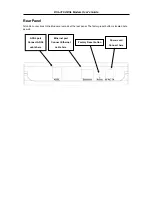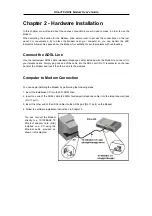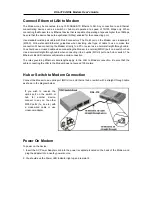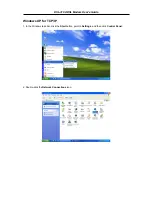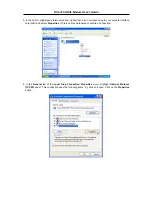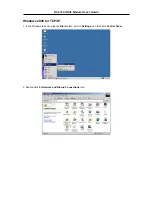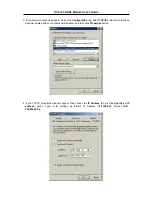
DSL-310 ADSL Modem User’s Guide
vii
Ethernet Port (NIC Adapter)
Any computer that uses the Modem must be able to connect to it through the Ethernet port on the Modem.
This connection is an Ethernet connection and therefore requires that your computer be equipped with an
Ethernet port as well. Most notebook computers are now sold with an Ethernet port already installed.
Likewise, most fully assembled desktop computers come with an Ethernet NIC adapter as standard
equipment. If your computer does not have an Ethernet port, you must install an Ethernet NIC adapter
before you can use the Modem. If you must install an adapter, follow the installation instructions that
come with the Ethernet NIC adapter.
Additional Software
It may be necessary to install software on your computer that enables the computer to access the
Internet (through computers operated by your ISP or service provider). Additional software must be
installed if you are using what is called a PPP (Point to Point Protocol) connection. For a PPP (Point to
Point Protocol) connection, the information needed to make and maintain the Internet connection is
stored on your computer, not in the Modem. This type of connection is similar to the arrangement used
for analog dial-up modems, but the connection speed is much faster. Various terms are to describe a
bridged ADSL connection including the term “RFC 1483 Bridge” which is used in this guide.
If your ADSL service is delivered through a “bridged” connection, the information needed to establish and
maintain the Internet connection is stored in the Modem. In this case, it is not necessary to install
software on your computer.
Account Information (User Name and Password)
Most users will need to supply a user name and password used to access the service provider’s network
(and ultimately, the Internet). This information is stored either in the Modem’s memory or on your
computer depending on the type of ADSL connection you have.
ACCOUNT INFORMATION (PPP Connections Only)
User Name:
Password:
Additional PVC Settings
If you are using multiple virtual connections it will be necessary to provide additional VPI and VCI values
for the device. These numbers define a unique route used on the ATM backbone of the WAN.












